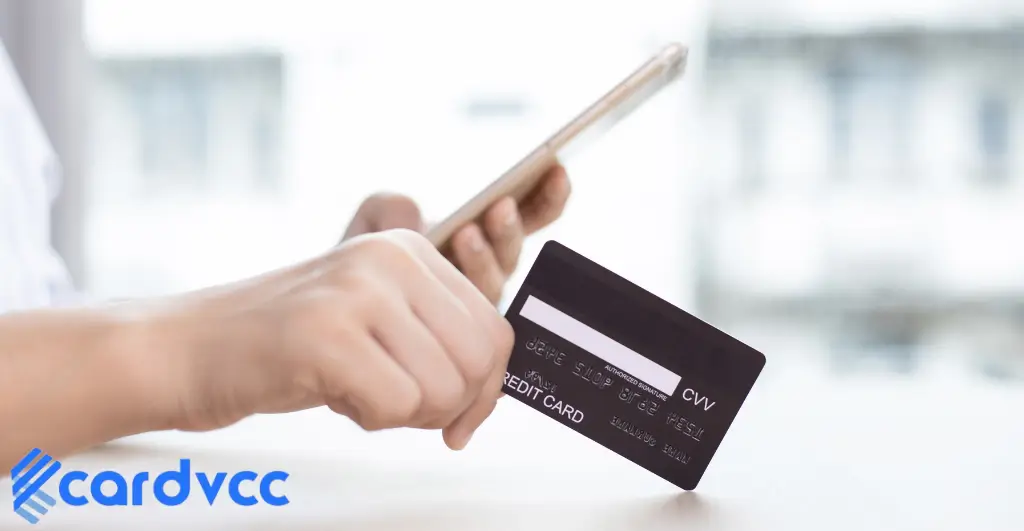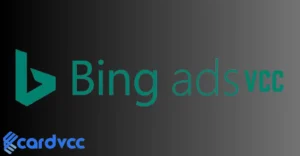An iTunes.com charge on your credit card is usually from purchasing apps, music, or other digital content from Apple. Review your purchase history to confirm the charges.

An unexpected charge from iTunes. com on your credit card can cause concern. These charges typically originate from buying digital content like apps, music, movies, or subscriptions through Apple’s services. It’s important to regularly monitor your purchase history to ensure all charges are legitimate.
Unauthorized charges might indicate a compromised account, necessitating immediate action. By understanding the typical sources of these charges, you can better manage your digital spending and avoid potential fraud. Familiarizing yourself with Apple’s billing practices can save you from unwanted surprises and keep your finances in check.
Introduction To Itunes Charges
Many people notice strange charges on their credit card statements. These charges often come from iTunes. Understanding these charges can help you manage your expenses better.
What Triggers Itunes Charges
iTunes charges appear for various reasons. Here are the most common triggers:
- Purchasing apps: Buying apps from the App Store.
- Subscriptions: Monthly or yearly subscriptions for apps or services.
- In-app purchases: Extra features or items bought within an app.
- Music and movies: Buying or renting songs, albums, or movies.
- iCloud storage: Paying for extra iCloud storage space.
Identifying Itunes Charges On Your Statement
Finding iTunes charges on your statement is easy. Look for the following details:
| Detail | Description |
|---|---|
| Merchant name: | Usually shows as “Apple” or “iTunes”. |
| Transaction date: | The date you made the purchase. |
| Amount: | The total cost of the purchase. |
If you still cannot identify a charge, check your email. Apple often sends receipts for purchases. This can help you understand the charge better.
Common Reasons For Itunes Charges
Many users see unexpected iTunes charges on their credit cards. Understanding these charges can help you manage your expenses better. Below are common reasons you might see iTunes charges.
Automatic Renewals
Many iTunes services come with automatic renewals. Subscriptions like Apple Music, iCloud storage, and various apps renew automatically. If you forget to cancel, you will see charges. Always check your subscription settings to manage renewals.
Accidental Purchases
Accidental purchases can happen easily on iTunes. You might click on an in-app purchase by mistake. Kids playing games can also make purchases unknowingly. To avoid this, enable purchase restrictions in your settings.
Family Sharing Expenses
Family Sharing allows multiple users to share purchases. If a family member buys an app, music, or movie, it charges the family organizer’s credit card. This can lead to unexpected expenses. Keep track of family purchases to manage costs.
| Reason | Description |
|---|---|
| Automatic renewals | Subscriptions renew automatically unless canceled. |
| Accidental purchases | Unintentional clicks or kids making purchases. |
| Family sharing expenses | Family member purchases charged to the organizer. |
Verifying Your Itunes Purchases
Unexplained charges on your credit card can be concerning. It is important to verify your iTunes purchases. This will help you understand each charge. Here’s how to check your iTunes charges accurately.
Using Apple ID Purchase History
Accessing your Apple ID purchase history is simple. First, go to Settings on your device. Select your Apple ID at the top. Then, choose Media & Purchases and tap View Account.
Next, choose Purchase History. You will see a list of all your purchases. Each transaction includes the date, app name, and cost. This helps you match charges to your credit card statement.
If you find any unfamiliar charges, verify if it was an in-app purchase. Children might make accidental purchases. Ensure your account is secure by enabling Ask to Buy for family members.
Checking Email Receipts
Apple sends email receipts for every purchase. Check your email inbox linked to your Apple ID. Look for emails from Apple or iTunes. These receipts provide detailed information about each purchase.
Each email receipt includes the purchase date, item description, and amount charged. This is useful for cross-referencing with your credit card statement. If you cannot find a receipt, check your spam folder.
Organize your email receipts in a folder. This makes it easier to find them when needed. You can also search your inbox using keywords like Apple receipt or iTunes purchase.
Managing Subscriptions And Purchases
Managing your iTunes subscriptions and purchases can feel confusing. But with simple steps, you can take control. Whether you want to turn off automatic renewals or request a refund, here’s how to do it.
Turning Off Automatic Renewal
Turning off automatic renewal is crucial to avoid unexpected charges. Follow these steps:
- Open the Settings app on your device.
- Tap on your Apple ID at the top.
- Select Subscriptions.
- Choose the subscription you want to manage.
- Tap Cancel Subscription.
Make sure to confirm your choice. Your subscription will stop at the end of the current billing cycle.
Requesting A Refund
If you need a refund for a purchase, follow these steps:
- Go to reportaproblem.apple.com.
- Log in with your Apple ID.
- Select the purchase you want to refund.
- Click on Report a Problem.
- Choose the reason for your refund request.
- Submit your request.
Apple will review your request and notify you of their decision. Always check your email for updates.

Preventing Unwanted Charges
Unwanted charges from iTunes can be frustrating. They can disrupt your budget and cause stress. Preventing these charges is essential for peace of mind. This section offers practical tips to avoid unexpected iTunes charges on your credit card.
Setting Up Purchase Restrictions
Setting up purchase restrictions is a great first step. Here’s how you can do it:
- Open the Settings app on your device.
- Tap on Screen Time.
- Select Content & Privacy Restrictions.
- Enable Content & Privacy Restrictions if they are not already on.
- Go to iTunes & App Store Purchases.
- Choose the desired restriction level for purchases:
- Allow – No restrictions.
- Don’t Allow – Blocks all purchases.
- Ask – Requires approval for each purchase.
Using Gift Cards Wisely
Gift cards can help manage spending. Here’s how to use them wisely:
- Track Balance: Always check the balance before making a purchase.
- Set Limits: Use gift cards to set spending limits for family members.
- Monitor Activity: Regularly review purchase history linked to the gift card.
Using gift cards can prevent unexpected charges on your credit card.
Dealing With Unauthorized Charges
Discovering an unauthorized charge from iTunes on your credit card can be alarming. It’s important to address this promptly. Follow these steps to resolve the issue and protect your finances.
Identifying Fraudulent Charges
First, review your credit card statement carefully. Look for any unfamiliar iTunes charges. Use the following tips to identify potential fraud:
- Check the date and amount of the charge.
- Verify if family members made any purchases.
- Look for multiple charges in a short period.
If you find any suspicious activity, move to the next step quickly.
Contacting Apple Support
Once you’ve identified a fraudulent charge, contact Apple Support immediately. Follow these steps to get assistance:
- Visit the Apple Support website.
- Sign in with your Apple ID.
- Navigate to the “Billing & Subscriptions” section.
- Choose “Report a Problem” and follow the prompts.
Apple Support will investigate and help resolve the issue. Keep a record of your communication with them for future reference.
By taking these steps, you can address unauthorized charges effectively and secure your financial information.
Understanding Family Sharing Charges
Family Sharing is a great feature on iTunes. It allows sharing purchases with family members. But it can be tricky when charges show up on your credit card. This section will help you understand how these charges work.
How Family Sharing Impacts Billing
With Family Sharing, one person becomes the family organizer. The family organizer’s credit card is used for all purchases. This includes app purchases, subscriptions, and in-app purchases.
When a family member buys something, the organizer gets charged. The charge appears as iTunes Com Charge on the credit card statement. This way, the organizer can keep track of all expenses.
Managing Family Purchases
To manage purchases, the organizer can set up Ask to Buy. This feature lets the organizer approve purchases before they go through. It helps control spending and avoid surprise charges.
Here’s how to set up Ask to Buy:
- Open Settings on your iPhone or iPad.
- Tap on your name at the top.
- Select Family Sharing.
- Tap on Ask to Buy and turn it on.
Family members will now need approval before making purchases. This ensures that all charges are expected and controlled.
| Feature | Description |
|---|---|
| Family Organizer | The person is responsible for paying for family purchases. |
| Ask to Buy | Feature that requires approval for purchases. |
Managing family purchases and understanding charges can help avoid confusion. This way, Family Sharing remains a beneficial tool without unexpected costs.
Conclusion: Navigating Itunes Charges
Understanding iTunes charges on your credit card is essential. It helps you manage your finances better. This section will sum up the key points and offer future considerations.
Summary Of Key Points
Here are the main takeaways about iTunes charges:
- Identifying Charges: Check your purchase history to identify charges.
- Subscription Management: Regularly review and manage your subscriptions.
- Fraud Detection: Report any suspicious charges immediately.
- Customer Support: Use Apple’s support for unresolved issues.
Future Considerations For Itunes Users
Consider these steps to avoid unexpected charges in the future:
- Set Purchase Limits: Use parental controls to set purchase limits.
- Regular Monitoring: Frequently check your account for unusual activity.
- Update Payment Info: Keep your payment information up to date.
- Enable Notifications: Enable purchase notifications for instant alerts.
By following these tips, you can navigate iTunes charges effectively. Stay vigilant and proactive to keep your finances in check.
Apple Products: iTunes
- One Apple Park Way Cupertino, CA 95014 USA
- Corporate Phone Number: 1-408-996-1010
- Apple Customer Care: 1-800-275-2273
- Website: Apple.com

Frequently Asked Questions Of Itunes Com Charge on Credit Card
What Is an iTunes Com Charge?
An iTunes com charge appears on your credit card statement when you purchase through Apple’s iTunes Store. This can include apps, music, movies, and more.
Why Do I See an iTunes Charge?
You see an iTunes charge when you buy digital content from Apple’s iTunes Store. This includes apps, music, movies, and subscriptions.
How Do I Identify an iTunes Charge?
Check your Apple ID purchase history to identify an iTunes charge. It lists all transactions made through your account.
Can I Dispute an iTunes Charge?
Yes, you can dispute an iTunes charge through Apple’s support. Visit the Apple website or use the Apple Support app.
Conclusion
Understanding the iTunes com charge on your credit card is crucial. It helps you manage your finances better. Always check your statements for any unfamiliar charges. Contact Apple Support if you see unauthorized transactions. Staying vigilant ensures your financial security and peace of mind.
Take control of your credit card activity today.
Read More- Buy VCC the Right Way







